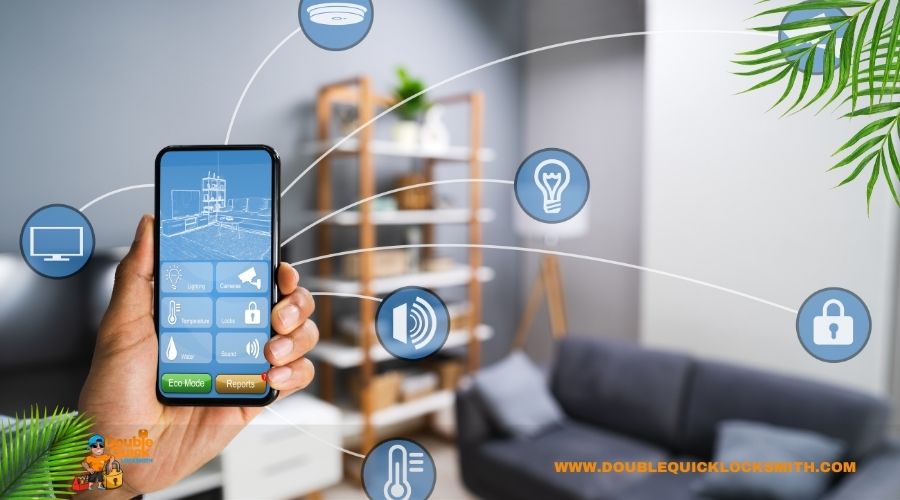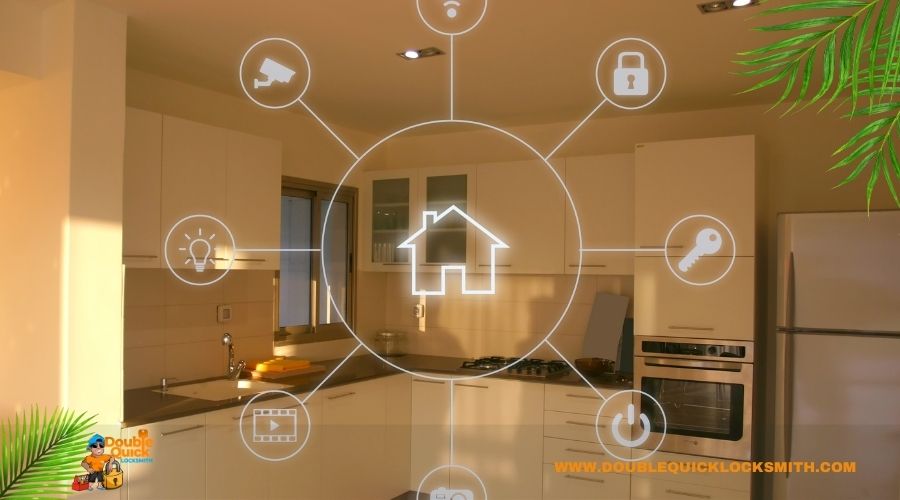
Smart homes are becoming increasingly popular, with more and more homeowners investing in the latest technology to make their lives easier and more convenient. However, with the convenience of smart home technology comes a new set of security risks. In this ultimate guide, we will explore everything you need to know about smart home safety and security, including how to secure your devices and networks, how to protect your personal data, and how to keep your family safe.
What is a Smart Home?
A smart home is a residence that employs internet-connected devices to automatically control various household functions. Homeowners can control these devices through a central hub or an app on their smartphone or tablet, enabling them to remotely manage heating, lighting, security systems, and more. Smart homes frequently incorporate sensors and other devices to collect data about the home environment and make system adjustments accordingly, resulting in a more efficient and comfortable living space.
Benefits of Smart Homes
Smart homes offer a range of benefits, including improved energy efficiency, increased convenience, and better home security. By using smart devices to control heating and lighting, homeowners can save money on their energy bills and reduce their carbon footprint. Smart home technology also allows for more convenient living, with devices that can perform a range of tasks with just a voice command or tap of a button. Additionally, smart home security systems offer advanced protection against break-ins, providing homeowners with peace of mind.
Risks of Smart Homes
Although a range of benefits is offered by smart homes, they also carry a set of security risks. As the number of connected devices in the home increases, hackers can potentially access personal data and compromise household safety. Moreover, cybercriminals find many smart devices easy targets due to weak security protocols. To ensure the protection of your smart home, it becomes essential to take steps towards securing your devices and networks, as well as safeguarding your personal data.
Security Checklist
Before setting up your smart home, it is important to create a safety and security checklist. This should include a list of all the smart devices in your home and the security features they offer, as well as a plan for securing your home network and protecting your personal data. Some of the key items to include on your smart home safety and security checklist include:
- Researching the security features of each smart device before purchasing
- Creating a secure Wi-Fi network and regularly updating your router password
- Using strong, unique passwords for all smart devices and accounts
- Enabling two-factor authentication on all accounts
- Regularly updating software and firmware on all smart devices
- Disabling any unnecessary features or access points on your smart devices
- Using a virtual private network (VPN) to secure your internet connection when using smart devices remotely
Smart Home Safety and Security: Securing Your Devices
Securing your smart devices plays a crucial role in protecting your home and personal data. To begin, conduct research on the security features of each device before making a purchase. Seek out devices that offer strong encryption and two-factor authentication, as well as those that receive regular updates with the latest security patches. Once you have purchased your devices, ensure that you change any default passwords to strong, unique ones.
Additionally, it is important to regularly update the software and firmware on all smart devices you own. This practice ensures that known security vulnerabilities are patched, thereby reducing the risk of a cyber attack. If any of your devices are no longer supported by the manufacturer, it may be necessary to replace them with newer, more secure models.
Lastly, consider disabling any unnecessary features or access points on your smart devices. For example, if your smart TV has a built-in camera and microphone that you never use, it is advisable to disable these features to minimize the risk of unauthorized access.
Smart Home Safety and Security: Securing Your Networks
Securing your home network is another crucial step in protecting your smart home. The first step is to create a secure Wi-Fi network with a strong password. Make sure to use a unique password that is not easily guessable, and avoid using any personal information in your password.
You should also regularly update your router firmware and password to ensure that your network is protected against the latest security threats. Consider using a separate network for your smart devices, so that if one device is compromised, it does not put your entire network at risk.
Finally, consider using a virtual private network (VPN) when using smart devices remotely. A VPN encrypts your internet connection, protecting your data from prying eyes and making it more difficult for hackers to access your personal information.
Smart Home Safety and Security: Protecting Your Data
Smart home safety and security rely on actively protecting your personal data. Begin by utilizing strong, unique passwords for all your smart device accounts and whenever possible, enable two-factor authentication. Steer clear of incorporating personal information like birthdates or addresses into your passwords.
Furthermore, it is important to regularly update the software and firmware on all your smart devices to ensure the elimination of any known security vulnerabilities. If you possess any devices that the manufacturer no longer supports, it is advisable to consider replacing them with newer, more secure alternatives.
Lastly, exercise caution when sharing data with your smart devices. Refrain from granting unnecessary permissions or disclosing personal information to third-party applications. Prior to installation, review the privacy policy of each device and application to guarantee the protection of your data.
Smart Home Safety and Security: Your Family's Safety
Keeping your family safe is the ultimate goal of smart home safety and security. Start by setting up your smart devices to alert you to any unusual activity, such as an attempted break-in or a device malfunction. Consider installing smart cameras and motion sensors to monitor your home and deter potential burglars.
You should also educate your family on smart home safety and security best practices. Teach them to create strong passwords, avoid sharing personal information, and be cautious about the apps they install. Make sure everyone in your household knows how to use your smart home security system and what to do in case of an emergency.
Finally, consider setting up a neighborhood watch or joining a local community group to stay informed about any potential security threats in your area.
Conclusion
Smart home technology is transforming the way we live, but it also comes with a new set of security risks. By following the tips outlined in this guide, you can protect your smart home and ensure the safety and security of your family. Remember to research the security features of each device, create a secure home network, protect your personal data, and keep your family informed about smart home safety and security best practices. With these steps in mind, you can enjoy the convenience and benefits of smart home technology with peace of mind.
We can assist you in upgrading, maintaining, and installing your Smart Home Security Systems in Honolulu, HI.
FAQs
Are smart home devices safe from cyber-attacks?
While no device is completely immune to cyber attacks, many smart home devices have built-in security features and regular software updates that help to minimize the risk. By following smart home security best practices, you can further reduce the risk of a cyber attack.
How can I protect my smart home from hackers?
To protect your smart home from hackers, it is important to use strong passwords, enable two-factor authentication, regularly update your devices' software and firmware, and secure your home network with a strong password. You can also consider using a VPN when using your smart devices remotely.
Can smart home devices be used to spy on me?
While some smart home devices have built-in cameras and microphones, they are designed to be used for legitimate purposes, such as home security or voice commands. To minimize the risk of unauthorized access, make sure to change any default passwords and disable any unnecessary features or access points on your devices.
How can I keep my family safe in a smart home?
To keep your family safe in a smart home, set up your devices to alert you to any unusual activity, such as an attempted break-in or a device malfunction. Educate your family on smart home safety and security best practices, and make sure everyone knows how to use your smart home security system and what to do in case of an emergency.
What should I do if I suspect a security breach in my smart home?
If you suspect a security breach in your smart home, the first step is to disconnect any compromised devices from your network. Change any passwords that may have been compromised, and contact the manufacturer or your security provider for further assistance.















Comments: